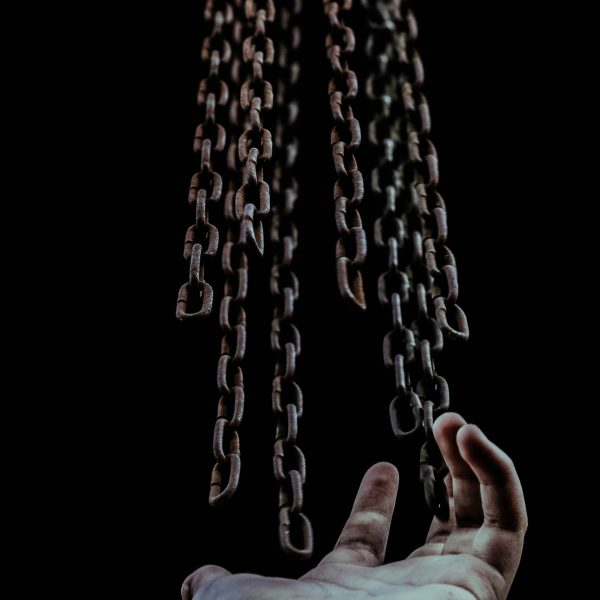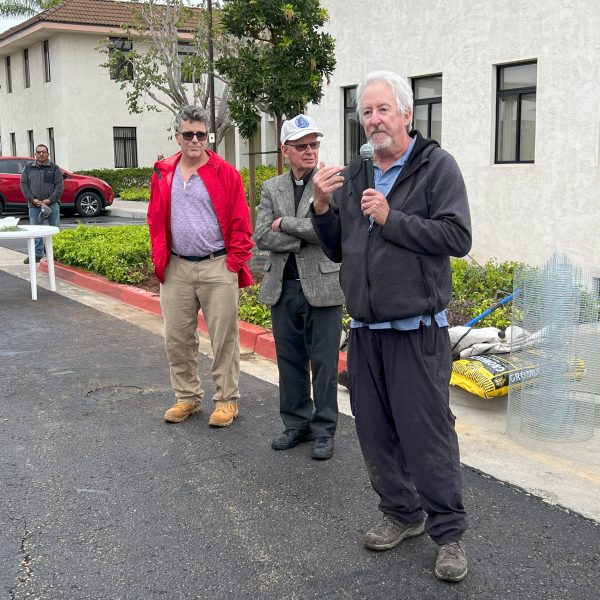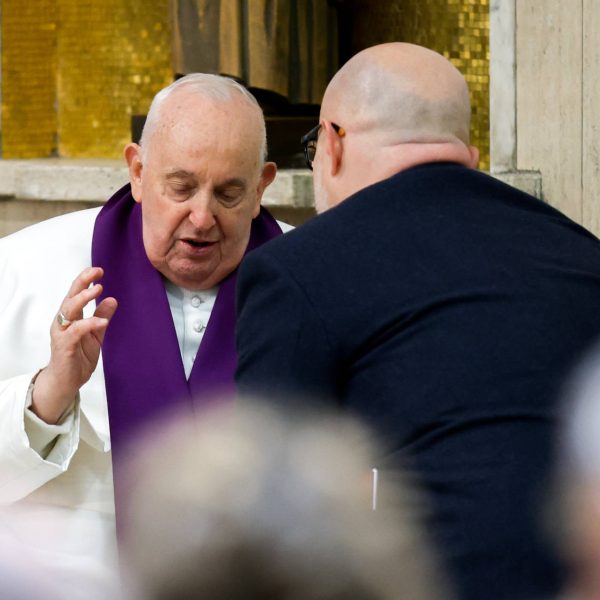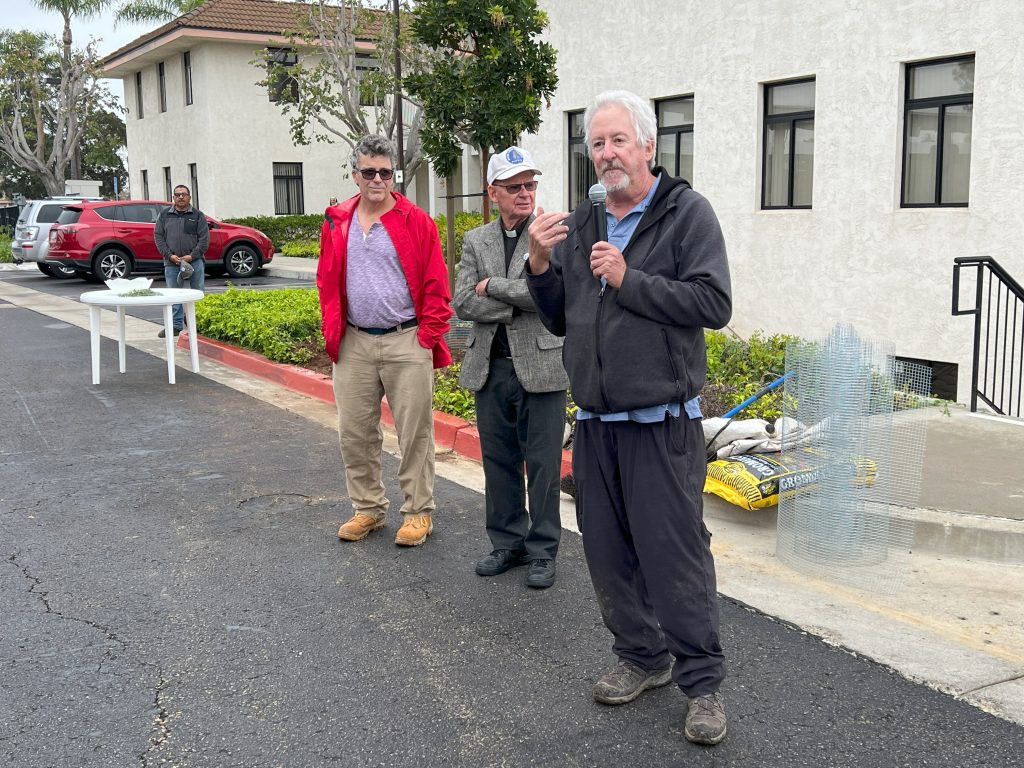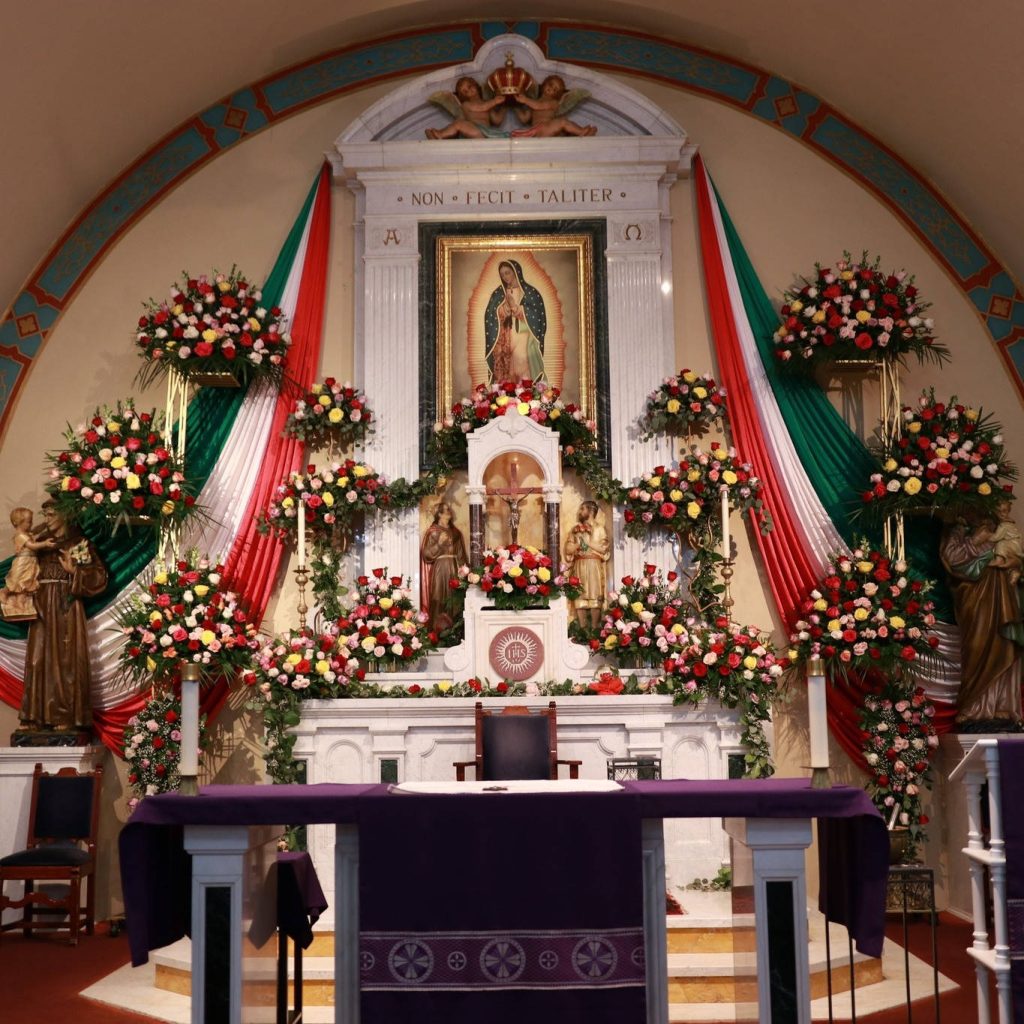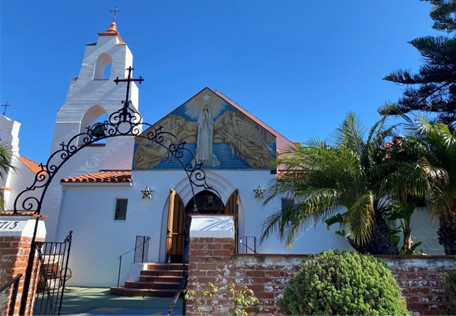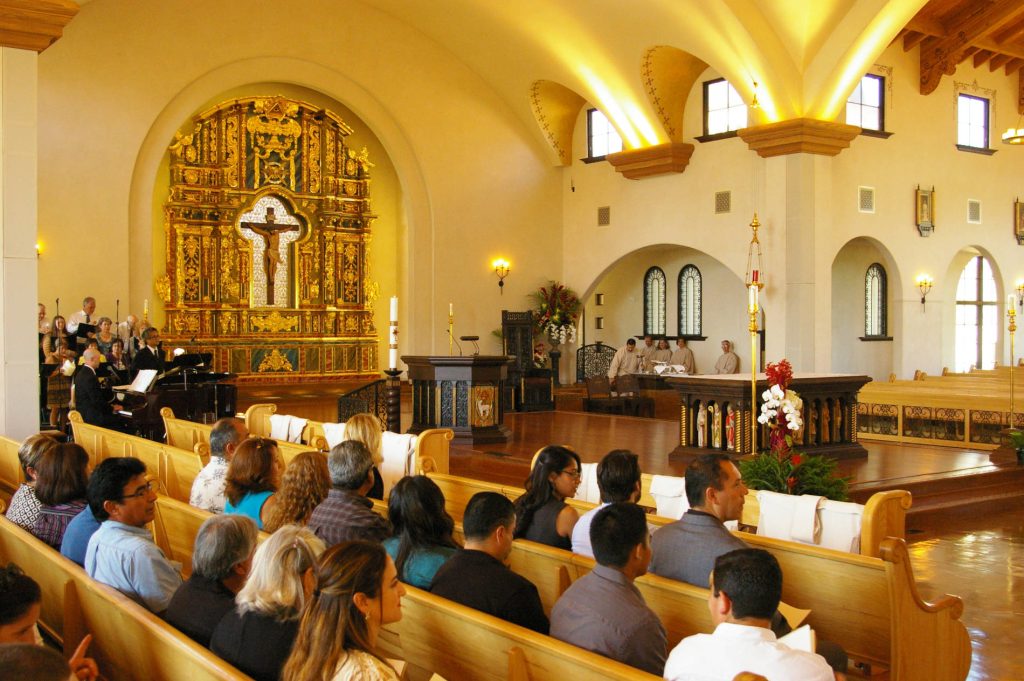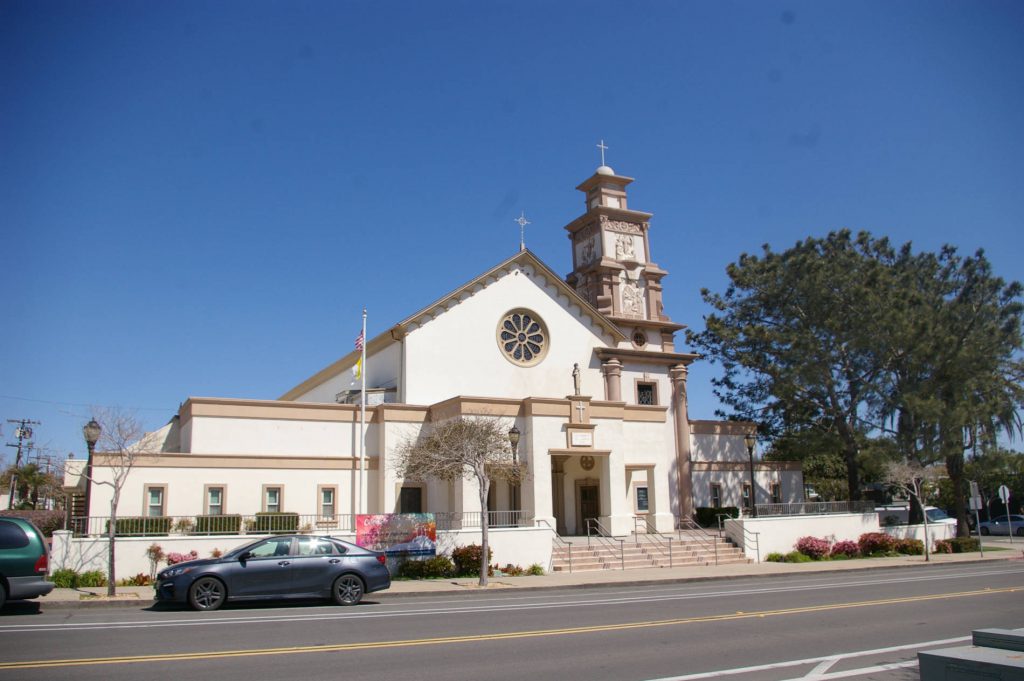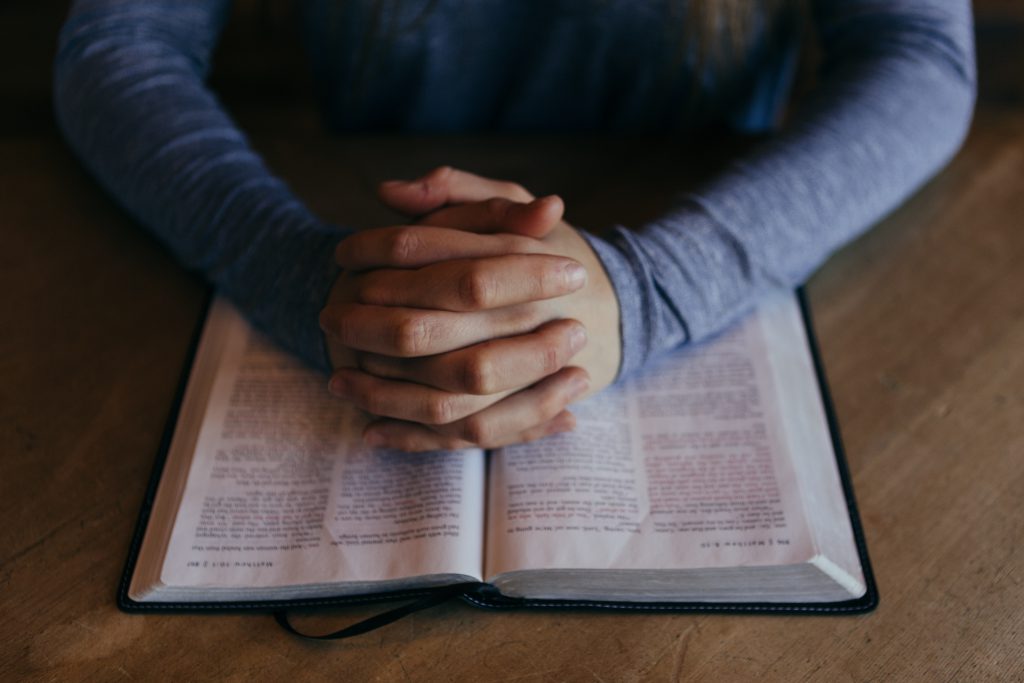SAN DIEGO — Father Cávana Wallace is the pastor of St. Therese Parish in Del Cerro.
Born in Antrim, Northern Ireland, he attended seminaries in both Ireland and San Diego.
Father Wallace, 55, was ordained for the Diocese of San Diego on March 19, 1992. Before becoming pastor of St. Therese Parish last July, he had served for 20 years as pastor of St. Margaret Parish in Oceanside.
You can read Father Wallace ’s homilies on his blog, https://printedaspreached.blogspot.com.
Question: What was your experience of Catholicism during your formative years?
Answer: My maternal grandparents had a deep spiritual influence upon me. “Granda” was a fireman and bricklayer, the strong and silent type; after a long day’s work, he would always kneel before the picture of the Sacred Heart and pray the rosary in silence. “Granny” would take me to daily Mass and afterwards explain to me the biblical stories depicted in the stained-glass windows.
As a teenager, these images became real when I visited Israel.
Whether it be the Holy Land or County Antrim, I seemed to sense an unbroken continuity between the past and the present. That’s probably why St. Paul’s words echo deeply with me that “Christ is the same yesterday and today” (Hebrews 13:8).
When did you first recognize a call to the priesthood?
From age 10 until 18, I attended a diocesan boarding school run by priests. It was almost like a seminary. The priests were very much like fathers to us – true fathers – because we were separated from our homes.
I often thought of being a priest like them. But what clinched it for me was when my father went to Israel as a contract worker in the mid-1980s and I spent my summers with him. I got to visit all the sites – Bethlehem, Jerusalem, Nazareth – and went backpacking around the Holy Land.
I found work at a hospice in Jerusalem. It was a difficult job for a 17-year-old; death and suffering were all around. The place I ran to in the midst of that was the Church of the Holy Sepulchre, built at the site of Jesus’ death, burial and resurrection. There, I was able to understand that suffering is necessary, but it has to be sacrificial. Through the sacrifice of Christ on the cross and through the experiences I had working in hospice, I developed a sense of what priesthood truly was.
I knew that I needed to give my life for something. I needed to make a sacrifice. A vocation isn’t a job or a career; it resonates with who you truly are and why you came into existence. I could never be anything other than a priest of Jesus Christ.
How did you come to serve in San Diego instead of Ireland?
At first, it seemed natural that I would become a priest of my home diocese. There was no thought of becoming a missionary.
But St. Patrick’s College in Maynooth was, at that time, one of the biggest seminaries in the world. I encountered fellow seminarians who were with religious orders or preparing to be missionaries. The seminary was like an international airport, and I was being exposed to the whole big Church throughout the world.
After a few years in the local seminary, I reached a point where I felt I had to leave Ireland and go as far away as I could. I transferred to St. Francis Seminary in San Diego that next year. I saw the great need for priests in San Diego, while there were already so many priests back at home, so I opted to stay here.
Growing up in Ireland, what did St. Patrick mean to you?
The hill of Slemish in County Antrim was a local landmark, a few miles from home. That’s where the young St. Patrick was abandoned when he was kidnapped from across the Irish Sea. I went to school in the Glens of Antrim, where Patrick’s first converts would cross the narrow channel to Scotland as missionaries. And of course, the local parish was founded by St. Patrick himself in 454 A.D.
All these local associations fired my imagination from an early age.
When you walk among the old sites, there’s something more than history. The stones speak. You’re in tune with what the early saints experienced in the rugged environment around them, because the landscape hasn’t changed in 1,500 years. You’re walking on the same ground, looking at the same sights. Even some of the ancient trees are still there. You get a sense of the eternal.
Here in San Diego, I try to hide during St. Patrick’s Day because, for me, it’s a personal and very spiritual day. It’s one that goes deep in my roots, and I don’t want to turn the flesh-and-blood Patrick into a plastic “Paddy” or an excuse just to have fun as we do here.
How frequently do you return home?
The last time was to bury my father, which was about eight years ago. I haven’t visited home regularly. More often, my family has come here instead. Of course, it’s been difficult recently because of COVID-related restrictions on travel, but I hope to get home this summer. It’ll be the first time in quite a while, and I look forward to it.
But, in a certain sense, San Diego is home now. I’ve lived here longer than anyplace else in my life. When I go back to Ireland, they say, “Here comes the Yank.” They even think I speak with an American twang.
How does present-day Ireland compare with the Ireland of your youth?
Of course, the economic and political landscape has changed completely since I first left home when I was 20 years old.
At present, the Church in Ireland as an institution has understandably lost much influence and even relevance in the lives of many. But the natural landscape, untouched except by God, still retains a spiritual language, one in which St. Patrick discovered the divine, his own vocation and mission in life.
The next time I go home and climb the hill of Slemish, I hope that there won’t be any signal on my phone! Maybe then I can sit down and enjoy a good heart-to-heart conversation with my own pilgrim companion, while taking in the power and glory of all of God’s creation around me.

